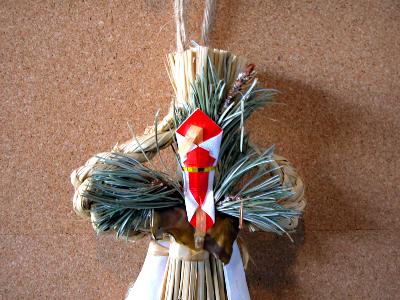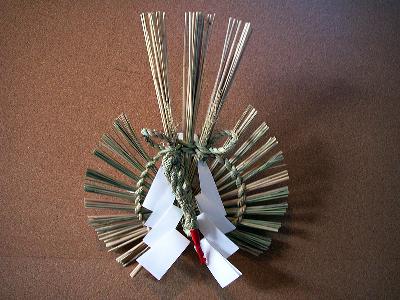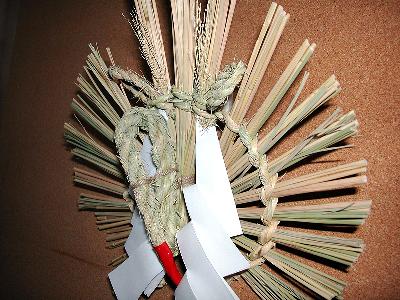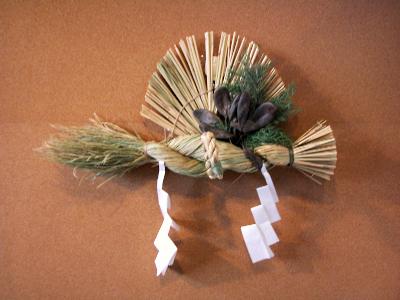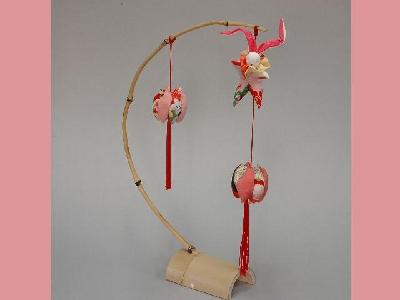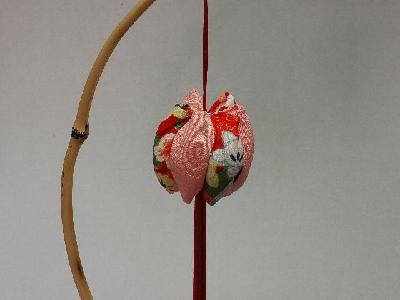|
Shimekazari is said to come from shimenawa rope which is used in shrines to mark the boundaries of a sacred area.
In welcoming the New Year, it is hung over the front of the house to mark it as a sacred area. It is also used as a lucky charm to prevent misfortune or evil spirits from entering the house, or to bring long life and bumper crops.
Many areas in the Tohoku region still preserve customs that use, along with shide and daidai, some food to decorate for shimekazari. This may include such things as mochi (sticky rice), Konbu (kelp), pine needles and fish.
Konbu stands for joy as it sounds similar to the word, yorokobu, (to be happy). Fish is used to pray for good health for the family and, in some cases, to indicate the elevated social rank of the house’s occupants. It is also believed to summon a big catch of fish.
The food used in shimekazari indicates appreciation for a rich harvest in the past year as well as hopes for the same in the coming year.
In welcoming the New Year, it is hung over the front of the house to mark it as a sacred area. It is also used as a lucky charm to prevent misfortune or evil spirits from entering the house, or to bring long life and bumper crops.
Many areas in the Tohoku region still preserve customs that use, along with shide and daidai, some food to decorate for shimekazari. This may include such things as mochi (sticky rice), Konbu (kelp), pine needles and fish.
Konbu stands for joy as it sounds similar to the word, yorokobu, (to be happy). Fish is used to pray for good health for the family and, in some cases, to indicate the elevated social rank of the house’s occupants. It is also believed to summon a big catch of fish.
The food used in shimekazari indicates appreciation for a rich harvest in the past year as well as hopes for the same in the coming year.
| [+ADDRESS] | 
|

